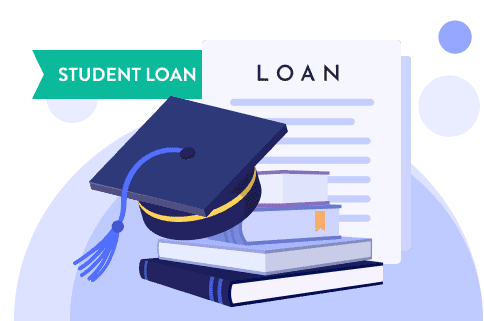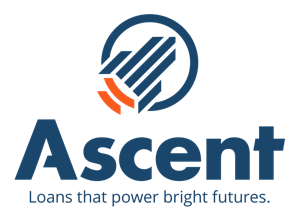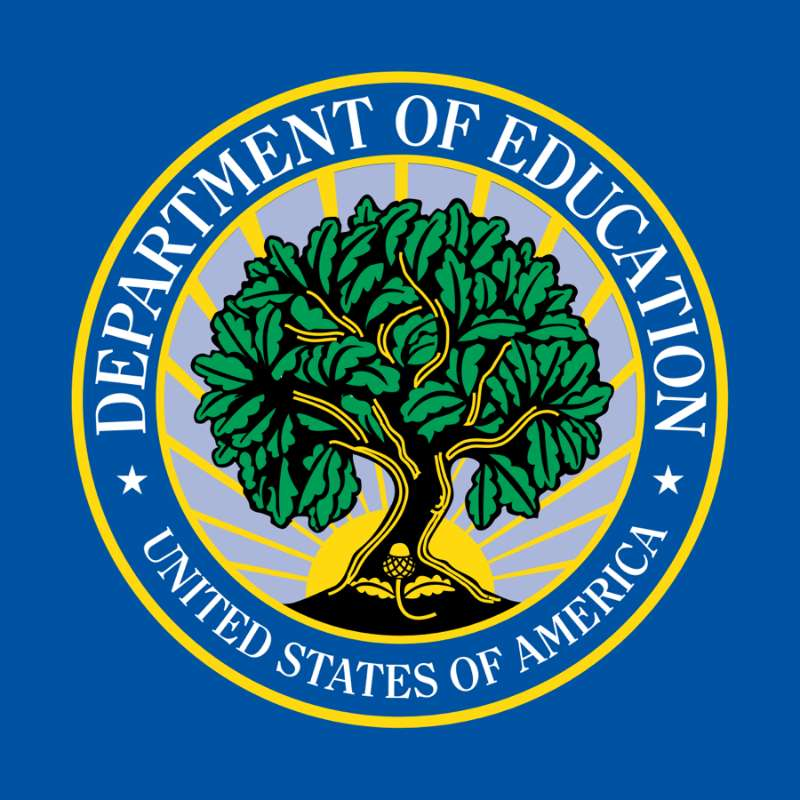Best Student Loans in South Dakota of 2024

Updated: December 28, 2023
Advertising & Editorial Disclosure
The escalating cost of higher education in South Dakota is a pressing reality for students and families across the state. If you're struggling with how to pay college, you're likely searching for a financial lifeline to make your academic ambitions achievable. That's where the best student loans in South Dakota can help.
MoneyGeek found that College Ave offers the best overall student loans in South Dakota. Those looking for the lowest interest rates may fare best with Earnest, whereas students with bad credit should consider Ascent. International students may find that MPower Financing is the best option, while those who need a co-signer may get the best deal from Discover.
Understanding Student Loans
Student loans are financial instruments designed to help you afford the cost of higher education. They can cover everything from tuition fees to study materials, making them a crucial resource for students who can't pay these costs out-of-pocket.
In terms of how they work, student loans involve borrowing a sum of money that you agree to pay back, along with interest, over a specified period. The interest starts accruing from the moment you take out the loan, and repayment plans can vary widely, often commencing after you've finished your education.
When borrowing student loans, expect to encounter these two types:
Federal student loans: Funded by the federal government, federal student loans typically feature lower interest rates and offer deferment and forbearance options. Financial need is a primary factor for eligibility.
Private student loans: Issued by private financial institutions, private student loans often have higher interest rates and stricter eligibility requirements, including a good credit score.
It's crucial to understand the differences between federal and private student loans. The type you choose will have long-term implications on your financial health, affecting everything from your creditworthiness to your ability to make large future purchases.
Best Private Student Loans in South Dakota
Private student loans come from non-governmental sources like banks and credit unions. They are designed to supplement educational costs that aren't fully covered by federal loans or other financial aid.
If you find that federal loans and scholarships aren't sufficient to cover your educational expenses, private student loans can fill the financial gaps. They can be particularly useful for covering the costs of private colleges, study abroad programs or advanced degrees.
One of the benefits of private student loans is the speed at which you can obtain them, especially if you have a good credit history. They can also offer higher loan amounts to cover more expensive educational paths. However, the drawbacks can be considerable. Interest rates can be higher and more variable, repayment options are generally less flexible and there's often a lack of forbearance and deferment options.
- College Ave
- 4.43% - 17.99%Fixed APR Range
- 5.59% - 17.99%Variable APR Range
- $1,000 minimum, no maximumLoan Amount Range
- Not requiredCo-signer
College Ave is a private student loan company that offers loans for undergraduates, graduates and parents of college students. It provides flexibility in repayment terms and loan options.
Pros
- Variety of loan products, including undergraduate, graduate and parent loans.
- Multiple repayment options, including interest-only payments while in school.
- No origination fees or prepayment penalties.
Cons
- Requires a credit check, potentially making it hard for students with no or low credit history.
- Doesn't offer loan prequalification, so you won't know your rate until you apply.
- Co-signer release only after half the loan term has passed.

College Ave
Best Overall
- Earnest
- 4.43% - 14.90%Fixed APR Range
- 5.32% - 16.20%Variable APR Range
- $1,000 upLoan Amount Range
- Allowed Co-signer
Earnest is a technology-enabled fintech lender that offers low-interest private student loans and student loan refinancing.
Pros
- Offers flexible repayment terms and forbearance options.
- No origination or prepayment fees.
- Provides loan prequalification, so you can check rates without affecting your credit.
Cons
- Requires a good credit history, which might be a hurdle for some borrowers.
- Not available in all U.S. states.
- No co-signer release option.

Earnest
Best With Lowest Interest Rates
- Ascent
- 4.36%–14.08%Fixed APR Range
- 1.47%–11.31%Variable APR Range
- $2,001–$200,000Loan Amount Range
- Non-U.S. citizens and temporary residentsCo-signer
Ascent is a private student loan lender providing loans for college and graduate students. They offer both co-signed and non-co-signed loan options.
Pros
- Offers both co-signed and non-co-signed loan options.
- Provides an option for a 1% cash back graduation reward.
- Offers loan prequalification, so you can check rates without affecting your credit.
Cons
- For non-co-signed loans, borrower must meet certain eligibility requirements like GPA.
- Loans not available to international students.
- Higher interest rates for non-co-signed loans.

Ascent
Best for Those With Bad Credit
- Federal Parent PLUS Loan
- Starts at 7.54%Fixed APR Range
- Not SpecifiedVariable APR Range
- Up to the total cost of attendanceLoan Amount Range
- OptionalCo-signer
Federal Parent PLUS Loans are part of the federal Direct Loan Program and are available to parents of dependent undergraduate students to help pay for education expenses.
Pros
- Available to parents regardless of the student's financial need.
- Loan funds are sent directly to the school.
- Fixed interest rates for the life of the loan.
Cons
- Requires a credit check.
- Has a higher interest rate compared to other federal student loans.
- Origination fee is deducted from each loan disbursement.

Federal Parent PLUS Loan
Best for Parents
- MPower Financing
- 13.72% – 15.01%Fixed APR Range
- Not SpecifiedVariable APR Range
- $2,001 up to $100,000Loan Amount Range
- Not requiredCo-signer
MPower Financing offers student loans to both domestic and international students without requiring a credit history or a co-signer.
Pros
- No co-signer or credit history required.
- Available to international students.
- Offers interest rate discounts for certain behaviors like on-time payments.
Cons
- Loan amounts are limited.
- Higher interest rates compared to other lenders.
- Not available for all schools or programs.

MPower Financing
Best for International Students
- Discover
- 3.99%–11.59%Fixed APR Range
- 1.79%–11.09%Variable APR Range
- $1,000 up to 100% of college expensesLoan Amount Range
- Optional Co-signer
Discover is a well-known financial institution that offers private student loans for undergraduate and graduate students, as well as student loan refinancing.
Pros
- Offers a one-time cash reward on each new student loan for good grades.
- Multiple repayment options available.
- No origination fees, late fees or prepayment penalty.
Cons
- Requires a credit check, which could be a hurdle for some borrowers.
- Doesn't offer prequalification, so you won't know your rate until you apply.
- No co-signer release option.

Discover
Best for Those That Need a Co-signer
Federal Student Loans in South Dakota
Federal student loans are financial resources that the U.S. government provides to help students afford the costs associated with higher education. They are often more advantageous than private loans for several reasons, such as:
How to Apply for Federal Student Loans in South Dakota
Applying for federal student loans is essential to financing your education, but the process can be complex. From initial preparations to finalizing your loan, each step requires careful attention. Here's a comprehensive guide to help you through each stage of the application process.
Complete the Free Application for Federal Student Aid
The Free Application for Federal Student Aid (FAFSA) is the key to unlocking federal financial aid. You'll need to provide detailed financial information, including income and tax details. The FAFSA is usually available online and should be completed as early as possible to maximize your aid options.
Review your Student Aid Report
After submitting the FAFSA, you'll receive a Student Aid Report (SAR). This report outlines your Expected Family Contribution (EFC) and summarizes the data you provided. Reviewing this document for any errors is crucial, as they can affect your eligibility for federal loans.
Wait for financial aid award letters
Your chosen schools will send you financial aid award letters after they've processed your FAFSA. These letters will detail the types of federal aid you're eligible for, including loans. Take the time to compare offers from different schools before making a decision.
Choose your loan and lender
Federal student loans are usually offered through the U.S. Department of Education, but you may have choices regarding loan types. Evaluate each loan type's interest rates, loan terms and repayment options for each loan type, and choose the one that best fits your financial needs and future repayment capabilities.
Sign the Master Promissory Note
Once you've chosen your loan, you'll need to sign a Master Promissory Note (MPN). This legally binding document outlines your commitment to repay the loan. Read the terms carefully and make sure you understand your obligations before signing.
Complete entrance counseling
If you're a first-time borrower, you'll likely need to complete entrance counseling. This online session educates you about your responsibilities as a federal loan borrower. It's a mandatory step that ensures you're fully aware of what a loan entails.
Confirm loan disbursement dates
Finally, check with your school's financial aid office to confirm when your loan will be disbursed. Federal student loans are usually sent directly to the school to cover tuition and other fees. Knowing the disbursement dates can help you plan your budget accordingly.
The Types of Federal Student Loans Available in South Dakota
When it comes to federal student loans, one size doesn't fit all. Each loan type serves a specific purpose and has its own eligibility criteria and terms. Here's how to distinguish between the four:
- Direct Subsidized Loans: These are tailor-made for undergraduates who can prove financial hardship. The government covers interest payments while you're in school, making this a budget-friendly option for those who qualify. However, there are borrowing limits based on your year in school and dependency status.
- Direct Unsubsidized Loans: Open to both undergraduate and graduate students, these loans don't require you to demonstrate financial need. The catch is that interest starts accumulating as soon as the loan is disbursed. If you defer interest payments, you'll graduate with a higher loan balance.
- Direct PLUS Loans: These loans cater to graduate students and parents of dependent undergrads. They come with a credit check and typically have higher interest rates than other federal loans. However, they offer the advantage of covering all your educational expenses, including living costs.
- Direct Consolidation Loans: If you're grappling with multiple federal loans, this option lets you merge them into a single loan with a fixed interest rate. While this makes repayment more straightforward, it can also extend your repayment period, leading to more interest payments over time.
Student Loan Forgiveness in South Dakota
Student loan forgiveness serves as a financial lifeline that cancels out a portion or the entirety of a borrower's educational debt, freeing them from the obligation of repayment. These programs are often strategically designed to incentivize careers in sectors that are vital to the community but may be understaffed.
In South Dakota, there are specific programs that offer loan forgiveness for certain professions, such as health care and public service.
South Dakota Recruitment Assistance Program
The South Dakota Recruitment Assistance Program offers a compelling financial incentive to qualifying health care providers, including physicians, dentists and nurse practitioners. The program provides $255,568 for qualifying physicians and dentists or $70,751.20 for physician assistants and certified nurse practitioners to help repay educational loans.
To be considered for this program, you must be a health care professional with an active license to practice in South Dakota. You must also commit to serving in a designated rural community in the state for at least three consecutive years. To apply, you must submit a completed application form to the South Dakota Department of Health.
Public Service Loan Forgiveness (PSLF) Program
While not specific to South Dakota, the Public Service Loan Forgiveness (PSLF) Program (PSLF) Program is available to residents working in qualifying public service roles. This program offers complete forgiveness for the remaining balance of federal student loans after 120 qualifying monthly payments.
To be eligible, you must be employed full-time by a qualifying employer. This includes government organizations at the federal, state or local level and certain non-profit organizations. You must also be enrolled in an income-driven repayment plan. Once you've reached the 120-payment milestone, you'll need to submit the official PSLF application to the U.S. Department of Education.
Tips for Managing Student Loans
Navigating student loans is a critical aspect of your financial life, both during your time in school and afterward. To help you manage this responsibility, here are some tips to consider:
Scholarships and Grants as Alternatives
Unlike loans, which are financial obligations that accrue interest and must be repaid over time, scholarships and grants are essentially financial gifts. They are awarded to students for various reasons, such as academic excellence, special talents or financial need.
The absence of a repayment obligation can significantly reduce financial stress during your college years, allowing you to focus more on your studies and less on how you'll pay for them. Furthermore, this financial relief extends beyond graduation, offering a smoother transition into the workforce or further studies without the looming cloud of loan repayments.
In South Dakota, securing scholarships and grants can help you ease the financial burden of college. Consider taking the following steps to find and apply for these opportunities:
Consult your school’s financial aid office
Your school's financial aid office is a treasure trove of information. They can provide you with a list of scholarships and grants specifically available to South Dakota students and offer valuable advice on the application process.
Utilize state-specific online resources
Websites like the South Dakota Board of Regents have resources dedicated to scholarships and grants within the state. These platforms can help you find opportunities that are tailored to South Dakota residents.
Check eligibility criteria
Before you start applying, make sure you meet the eligibility requirements for each scholarship or grant. This will help you focus your efforts on opportunities that are a good fit for your academic and financial situation.
Collect required documents
Most scholarship and grant applications require supporting documents like transcripts, letters of recommendation and sometimes even financial statements. Make sure you gather these well in advance to avoid last-minute stress.
Craft a strong personal statement
Your personal statement or essay is your chance to stand out. Invest time writing a compelling piece showcasing your achievements and aspirations and how the scholarship or grant will benefit you.
Submit the application
Once you've prepared all the necessary documents and your personal statement, it's time to apply. Follow the application guidelines meticulously to ensure that you meet all the requirements.
Confirm application receipt
After submitting your application, it's a good practice to confirm that it has been received. A simple follow-up email can go a long way in showing your enthusiasm and commitment.
The Impact of Student Loans on Credit
It's important to be aware that student loans can influence your credit score. Making payments on time can serve as a building block for a strong credit history, which can benefit you when you're looking to make other significant financial moves like buying a home. Conversely, late payments can be detrimental, causing your credit score to dip and making future loans more expensive.
If you find yourself in a situation where you've defaulted on your student loans, the impact on your credit can be devastating. A default can cause your credit score to plummet and stay on your credit report for an extended period, making it challenging to recover financially.
Frequently Asked Questions
Student loans are often a necessary part of the educational journey in South Dakota. We compiled a list of frequently asked questions to help you navigate the financial aspects of your education with confidence.
For students in South Dakota, the eligibility criteria for federal student loans generally include being a U.S. citizen or an eligible non-citizen, enrolling at least half-time in an accredited educational institution and maintaining satisfactory academic progress. Private lenders often have additional requirements, such as a minimum credit score or income level.
To secure a federal student loan in South Dakota, you'll first need to complete the FAFSA, which will determine your eligibility for various types of federal financial aid. For private loans, you'll typically apply directly through the lender, which may involve a credit check and possibly a co-signer.
Subsidized federal loans are available to students who demonstrate financial need, and the government pays the interest on these loans while you're in school or during deferment periods. Unsubsidized loans are not based on financial need and interest starts accruing immediately upon disbursement. The primary difference between the two is how interest is handled during your time in school and other deferment periods.
Interest on student loans is usually calculated as a percentage of the remaining principal balance, which is the original loan amount minus any payments you've made toward the principal. Federal loans typically have fixed interest rates, while private loans may offer either fixed or variable rates. Interest may be capitalized at certain times, meaning it's added to the principal balance and you'll then pay interest on this new, larger amount.
Federal student loans offer a variety of repayment plans, including Standard, Graduated and Income-Driven options. Private loans usually have less flexible repayment terms, set by the lender.
If you're struggling to make student loan payments, it's crucial to address the issue as soon as possible to avoid default. Federal loans offer options like deferment and forbearance, which allow you to temporarily pause or reduce your payments. Private loans often have less lenient terms, but some lenders may offer short-term relief options.
Defaulting on a student loan can lead to severe consequences, including a damaged credit score and potential legal action.
Student loan forgiveness programs are designed to cancel a portion of your student loan debt under certain conditions. Each program has its own set of qualifications, typically involving a work commitment in a specific field for a set period.
About Christopher Boston

sources
- Federal Student Aid. "Public Service Loan Forgiveness (PSLF)." Accessed August 30, 2023.
- South Dakota Board of Regents. "Scholarships." Accessed September 11, 2023.
- South Dakota Department of Health. "Recruitment Assistance Program." Accessed August 30, 2023.
Editorial Disclosure: Opinions, reviews, analyses and recommendations are the author’s alone and have not been reviewed, endorsed or approved by any bank, credit card issuer, hotel, airline, or other entity. Learn more about our editorial policies and expert editorial team.
Advertiser Disclosure: MoneyGeek has partnered with CardRatings for our coverage of credit card products. MoneyGeek and CardRatings may receive a commission from card issuers. To ensure thorough comparisons and reviews, MoneyGeek features products from both paid partners and unaffiliated card issuers that are not paid partners.